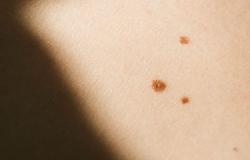Identifying women likely to develop depression after breast cancer, as soon as they are diagnosed, was the objective of the work presented this year at the ASCO International Cancer Congress by Dr. Antonio Di Meglio. He deciphers them for us.
Difficulty finding one’s place in society, returning to a position within a company, making plans, etc. Post-cancer depression has a strong impact on the quality of life of people who suffer from it, mainly women.
Dr Antonio Di Meglio, medical oncologist at Gustave Roussy and researcher in the “After Cancer” team, looked at the factors associated with the long-term persistence of depressive symptoms. To do this, he analyzed their evolution in more than 9,000 women affected by breast cancer at an early stage, from diagnosis to 6 years after treatment.
Why were you interested in women affected by breast cancer at an early stage?
Dr Di Meglio : First of all because it is the most common cancer in women and the chances of cure are high when it is diagnosed early. It is therefore important to be concerned about their quality of life, during and after the illness.
But also because, thanks to the CANTO cohort (see box), we have an evaluation of their symptoms over time, particularly depressive.
How do you assess depressive symptoms?
Women answer questionnaires to self-assess their feelings about enjoying life, their future prospects, etc. This is not a real diagnosis but it gives us an indication of the psychological state of the patient. .
What did you observe?
We have identified 4 depression trajectories.
Some women will never experience depressive symptoms, whether before, during or after treatment. This is the majority of cases: 68%.
Others present at the time of diagnosis and, either they persist, in 7% of cases; or they decrease, also in 7% of cases.
Finally, in around 20% of cases, or in one in 5 women, symptoms appear after diagnosis and worsen during the treatment phase. In particular, a peak was observed around 3 to 6 months after primary treatments, such as surgery, chemotherapy or radiotherapy. These symptoms can persist for at least 6 years after diagnosis.
Have you identified any commonalities between these women?
We found that women most at risk of developing depressive symptoms after their cancer are older women, those with a high body mass index – an indicator of being overweight or obese – or a socio-economic level. weak economic.
This is also the case for women with a history of psychiatric disorders or who, at the time of diagnosis, report fatigue, anxiety, insomnia, cognitive disorders or body image disorders.
What lessons can we learn from this study to improve the care of these patients?
Our study demonstrates that, from the moment of diagnosis, it is important not to neglect depressive symptoms and not to focus solely on treatments. We will thus be able to detect women at higher risk of developing depression early and offer them personalized and adapted interventions.
Like what for example ?
These may involve interventions focused on improving lifestyle: avoiding weight gain, increasing physical activity, etc.
It may also involve psychological support. Our study made it possible to characterize different areas of life on which cancer has repercussions: personal relationships, professional life, etc. We could therefore put in place more detailed psychological assessments in order to adapt the psychological work on the areas which are more impacted.
Our study, which is purely observational, does not demonstrate that by acting on these factors we will be able to reduce the risks of developing depressive symptoms, but it does provide avenues for testing interventions likely to change the trajectory of depression.
THE CANTO COHORT
The CANTO cohort is a so-called prospective cohort which follows the outcome of 12,000 women with localized breast cancer, treated in 10 cancer centers. Its objective is to describe the toxicities and after-effects associated with treatments, to identify populations likely to develop them and to adapt treatment accordingly to guarantee a better quality of life post-cancer.
To find out more: Etude Canto
Doctor of biology, science journalist and editor-in-chief of the Rose magazine website
- -





